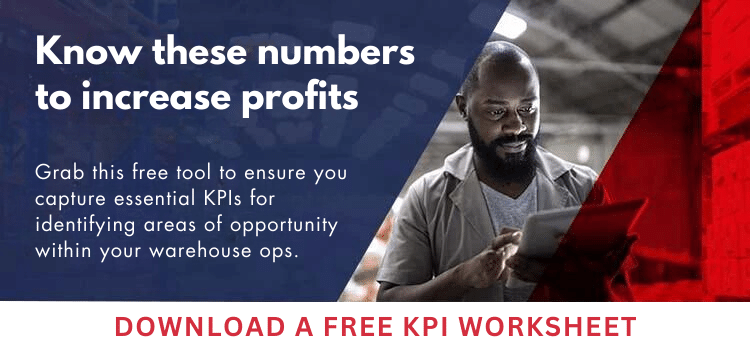The biggest challenge you’ll face in relocating a warehouse is disruption to your business. If you are fully invested in inventory at an existing 3PL or your internal facility, how will you transfer inventory to start up the new facility without having to shut down for days or even weeks?
 In our consulting experience relocating warehouses, we often find that the first few weeks or months of the new warehouse’s operation can be severely hampered by warehouse inventory management problems, including:
In our consulting experience relocating warehouses, we often find that the first few weeks or months of the new warehouse’s operation can be severely hampered by warehouse inventory management problems, including:
- Transferring rather than liquidating excessively aged inventory and overstocks;
- Failure to purchase and receive reorders for the new facility rather than receiving at the old facility and transferring;
- An inaccurate physical inventory creates inventory availability issues in filling orders;
- Slower than desired inventory put away slows order fulfillment;
- Inability to find stock which was in the existing facility;
Everyone knows the importance of taking an accurate physical inventory. This blog concentrates on best practices that can be used to bring inventory on-line quicker.
Here are 10 inventory considerations for transferring inventory from the existing to the new facility:
1. Estimate amount of space required
For internal facilities, develop the number of bulk and forward picking positions based on the number of SKUs. How much space is required for growth and peak inventories?
In planning a move from a 3PL, it’s sometimes tough to estimate SKU quantities and as well as the number of bin/slot locations required. Use their average month and peak month invoices as starting points for estimates. Analyzing space used is handicapped by the inability to have non-company management tour the facility until the termination notice is given.
2. Determine transportation required
Early in your planning process, it will be necessary to determine number of trailer trucks, the time frame for use and their cost to transfer the product. We would suggest you review your estimate periodically and adjust accordingly. If you have cubic data for items and cartons, you can take the total cube divided by the cubic dimensions of your ideal pallet size on the truck in order to estimate the number of pallets.
3. Slotting plan for new warehouse
Determining where products will go at your new facility as soon as they come off the truck is one of the most critical tasks. Using data from your internal systems, or from the 3PL provider’s warehouse management system, analyze critical data such as unit sales velocity, rate of sale, units on hand, etc. Warehouse inventory can be analyzed by product, quantity and the number of bulk and picking slots. Equally important is to estimate how peak season inventory affects space planning. The objective is to pre-determine each SKUs bin/slot location so the outbound pallets can have the existing warehouse location and the new warehouse location on pallet ticket.
4. Reduce excess and overstock inventory
Many warehouses are holding excessively aged and slow moving inventory that merchants are often reluctant to liquidate. Work with top management to pare the inventory down so you don’t move the problem SKUs to the new location.
5. Receiving dock, staging areas and returns
There can be considerable quantity of product residing in these workspaces throughout the warehouse, such as receiving docks, staging areas and returns. Clear these areas of all inventory.
6. Consolidate SKUs
When you have cleared receiving docks, staging areas and returns and considered bulk and forward picking, you may have partial pallets, cartons and single products in multiple areas. If a SKU is in multiple locations, consolidate and create full pallets for the least number of locations. Create as few mixed or multi-SKU pallets as possible.
This will allow you to simply put away the shrink wrapped pallet without having to stop, depalletize product, recount and relabel product in the new warehouse.
7. Dispose of damaged product
During the inventory counting and consolidation process, you may find product you didn’t know was in the warehouse. We have found product that has fallen down between pallet sections and other product that has been damaged and set aside. Make a decision about the inventory disposition and whether they are sellable or not.
8. Clear return to vendor (RTV) inventory
Get the merchants to clear all RTVs so that you aren’t moving excess inventory.
9. New slot locations
After counting, consolidating SKUs and shrink wrapping the pallet, write the SKU number, quantity, existing bin/slot location and the new bin/slot location on the pallet inventory ticket. If the pallet is mixed product, be sure to record this information on each individual carton.
10. Ensure quick put away at the new warehouse
Having a slotting plan for the new warehouse and labeling each pallet with the new warehouse location will let workers at the new facility put inventory away efficiently without doing a detail count again.
Follow these inventory best practices to get your new facility get up and running quickly. If we can be of service helping facilitate a warehouse move plan or a warehouse layout and design plan, you may contact us here to discuss your unique needs or issues/questions we didn’t address in this article.





SHARE